
Zombie Vegetable Takeover: a Review of the Bunnicula Series by James Howe
More Videos
Published
2 years agoon

SPOILER ALERT
This so-called review / trip down memory lane goes into some of my favorite scenes from the books, so treat it like garlic or sunlight to a vampire and stay away in your crypt if you do not wish to be barraged with such nostalgic plot-blowing reverie (both regarding the Bunnicula series and some other things thrown in for added flavor).
So to get on with it…
Anyone who spends a lot of time in this genre will nod and shake their heads in understanding when I say that it often comes up, “how or when did you first get into horror?” I don’t know many in this who haven’t been posed that question at some point or another. Hell, I’ve been on both sides of it myself – we all kind of want to know when any among us went through that initiation and what form it took for them… In response, many will often cite R. L. Stine and Goosebumps, or Stephen King, or Nightmare on Elm Street, Friday the 13th, and so on.
For me, it evolved out of my love for language play and my taste for the odd or for things that appeal to the opposite of expectation. I’ve always gravitated towards things that have a kind of off beat inside-joke humor to them. Puns and wordplay are generally a great addition. Surreal and other weirdness is also always good.
I grew up watching campy B-rated movies with my father. The old Universal Studios Classics like Lon Chaney as The Wolf Man or Bela Lugosi as Dracula. And some more obscure flicks too. His collection numbered in the thousands. My favorite was probably The Beginning of the End because of the final scene where the giant grasshoppers descend upon Chicago. I find it endlessly amusing how this scene plays out, since in filming it, they literally just dumped a bunch of grasshoppers on a photograph of Chicago and of the buildings and then tried to pan away whenever the insects would start to walk across the sky or fly off. This still humors me to this day.
I also loved The Addams Family. The old cartoons, the black and white television series, the movies… I especially loved how the movie directly translated scenes and imagery from the cartoons, with Morticia cutting off the roses to keep the thorns or Gomez asking her if she was unhappy and banishing the sunlight. I kind of saw my dad and my stepmother as Gomez and Morticia, and my stepsister and myself as Pugsley and Wednesday. I came to love it even more when it was revealed that their living room from black and white film was actually mostly pink, because that was even more me, especially as I aged into my love of pink things in decidedly un-girly contexts. The living room fit right in. I lived The Addams Family. It was totally a thing.
Like, seriously, get on with it already…
With that background, another big influence was the Bunnicula series by James Howe, which is the subject of this so-called review. I read these books over and over again. I loved the writing style, how the story was told from the standpoint of the dog Harold, and how Chester the cat was so mortified by the unusual happenings that began when the rabbit came into their lives and how obsessive he got about it all. Harold is all-dog and is rather food motivated, as one might expect – you’d almost think he was a beagle, but no. Still, he tells a compelling tale from the standpoint of a dog being a dog, and that’s pretty amusing in and of itself even without the horror twist.
Book 1: Bunnicula earns 4.0 Cthulus
 (4 / 5)
(4 / 5)
The original Bunnicula is the best book in this series by far. The characters and the story are compelling and the book is very amusingly written. It’s fun, especially if you enjoy wordplay, and offers some good lighthearted comedy that can appeal to readers of all ages. I also enjoyed how all of the animals’ personalities come into play and how Harold explains everything from a dog’s perspective. That point of view is truly rather delightful.
My favorite scene in Bunnicula is still the big standoff between Chester and Harold and the family, where Chester has misinterpreted his reading on vampires and is trying to stake little Bunnicula through the heart with an uncooked raw beef steak that had been left on the counter to thaw. Unsurprisingly Harold, being all-dog, is more concerned with when he would get to eat the wondermous piece of raw meat that was totally going to waste in the endeavor. It is just delightful how this scene plays out and still evokes a chuckle from me even this many years later.
Book 2: Howliday Inn
The second book Howliday Inn was not nearly as good as the first. It’s essentially a murder mystery whodunit with your stereotypical cast of suspicious characters: the jock, the floozy, the heartbroken, the sidekick, the crazy, the weirdos, the clumsy, and the annoying. Everyone has their schtick and they all have a motive. You know the scene – very 1980s. Makes for some decent comedy but limited depth… The end reveal of what happened isn’t implausible but at the same time it doesn’t really feel fulfilling, and the book just does not resonate with the same side-splitting humor as the first.
Book 3: The Celery Stalks at Midnight
The third book The Celery Stalks at Midnight revisits the same themes of the first with a lot of added puns thrown in. It was much better than Howliday Inn, but still not as good as the first Bunnicula. It’s funny to see Chester at it again, fretting over Bunnicula turning the town into vampires somehow, Harold still obsessed with food, and the new member of the family, dachshund puppy Howie, bringing his own unique energy to the mix.
Book 4: Nighty-Nightmare
The fourth book Nighty-Nightmare is kind of a cross between the second and third books. Rather than winding up at a pet hotel, the family goes camping as the basis for this spooky woodsy tale. But the book really isn’t all that suspenseful despite the new creepy characters that have joined the cast. Too much gets lost in Chester’s telling of how Bunnicula came to America. Mostly it just seems that Chester is overreacting and fabricating tales to get Harold and Howie (and their guide Dawg) worked up, and his tale is just not very compelling because the vampires seem like more bumbling idiots. But perhaps that’s just how animals see all humans in this world. Also, the ending was really lackluster in my opinion.
Book 5: The Return to Howliday Inn
I don’t recall reading the fifth book, The Return to Howliday Inn. Honestly, I didn’t like the second book set at Howliday Inn as well so I doubt I’ll seek this one out. Maybe it’s better. Maybe not. I don’t know. Pressing onward…
Book 6: Bunnicula Strikes Again
The sixth book, Bunnicula Strikes Again, was surprisingly good. I liked how Howie the dachshund puppy had gotten into the FleshCrawlers series as a direct riff on GooseBumps, in a sort of weird homage and strange disdain all at once. And this story built upon the first book well, coming full circle to the original plot, characters and setting. In the end, the book pulls for the two characters locked in epic battle, Bunnicula the vampire rabbit and Chester the cat, to somehow overcome their differences after they almost perish together, but this comes across as trying too hard to create a happy ending. I feel that the ending it had been careening toward would have been stronger, wherein both perished together, for all that it would likely be disheartening to the intended audience and would not have resulted in any further books in the series.
Book 7: Bunnicula Meets Edgar Allan Crow
There is a seventh book, Bunnicula Meets Edgar Allan Crow, but I have also not read this one. Honestly, I really kind of wish the series had ended with Bunnicula Strikes Again with the epic battle reaching a different end. But that is just my opinion and I’m not the writer, so here we are. Yeah, yeah, I know… what kind of series review is this that it doesn’t even go into all of the books in the series? But I honestly just missed those two and don’t feel like going back to them, besides which this review is too long already. So I’m leaving them out. If you are a die-hard fan, feel free to leave a comment to say how you felt about the books I skipped (or any of the others for that matter).
Apart from the original Bunnicula, I give the rest of the series 3.0 Cthulus.
 (3 / 5)
(3 / 5)
The others really just don’t hold up to the original book in my opinion. From a kid standpoint, they’re probably a more solid 3.5 but I suspect that depends on the kid. In fairness The Celery Stalks at Midnight and Bunnicula Strikes Again are better, but still aren’t on par with the original tale. Still the series is a decent introduction to horror for a kid who loved language and puns and animals and they are rather fun to read. And, given that they were purportedly written by the dog Harold, with the wonderful introductions by the so-called editor, they definitely all have truly dog-based insight moments which can be very amusing at times.
My child-self really enjoyed these books but in adulthood I’ve come to realize I really only remember the first, and for good reason. The others come across as kind of flat. The characters are all pretty caricatured to maximize humorous effect, and can all come across as a bunch of bumbling idiots at times. The series just doesn’t have the same depth as some of the more modern stories.
In other history, the first book was written by both James Howe and his wife Deborah, who also partnered with him on one other book (not in this series), while the rest were written solely by James. I have later learned that Deborah Howe died of cancer before either of the two books they collaborated on were published, and so she never realized just how popular the Bunnicula series became. I can understand, given the popularity of the first book, why James Howe continued it, and they are fun thematically, but sadly the rest of the series just lacks some of the same spark that the first had. If you only pick up some of the books in this series, definitely read the first Bunnicula, and then perhaps The Celery Stalks at Midnight and Bunnicula Strikes Again – those are by far the strongest and most heartfelt.
You can purchase Bunnicula and/or the box series on Amazon from the links provided above, just remember that, as always, if you do so we will get some $ back. The Dark Lord says shop away…
Jennifer Weigel is a multi-disciplinary mixed media conceptual artist residing in Kansas USA. Weigel utilizes a wide range of media to convey her ideas, including assemblage, drawing, fibers, installation, jewelry, painting, performance, photography, sculpture, video and writing. You can find more of her work at: https://www.jenniferweigelart.com/ https://www.jenniferweigelprojects.com/ https://jenniferweigelwords.wordpress.com/

You may like
2 Comments
Leave a Reply
Cancel reply
Leave a Reply
This site uses Akismet to reduce spam. Learn how your comment data is processed.
Released in May of this year, You Like It Darker is the latest short story collection by Stephen King.
In the afterward King says. “You like it darker? Fine, so do I.” This sort of declaration might lead one to believe that this collection is going to be darker than his others. That we might reach depths of horror that we haven’t yet seen before, even from the King himself. This is a promise that this book does not deliver on. But that isn’t to say that You Like It Darker wasn’t still a damn fine read.
The good stories
The first story in the book, Two Talented Bastids, started everything out on the right foot. This is the story of a man named Mark. Mark looks after his father, who he lovingly calls Pop. Pop is a famous author His best friend, Butch, was a famous painter before he passed.
Everyone wants to know how two men who are lifelong friends suddenly become famous in their forties. But as far as the men in question are concerned, they’re just two talented bastids. That is, until Pop dies, and leaves a story to explain to Mark how one fateful hunting trip changed their whole lives.
Another tale I appreciated was Rattlesnakes. This is a sequel to the classic King novel, Cujo. If you haven’t read Cujo, this will spoil the ending for you. I, for instance, had not read Cujo.
Rattlesnakes is about Vic Trenton. A recent widower, he’s traveled to Florida to heal from his losses. There, he meets a lovely woman about his age (old) who appears to be not quite right in the head. She walks around around town like Delta Dawn, not with a suitcase in her hand but wheeling a twin stroller. Years ago, her twin sons were killed by rattlesnakes. And she’s never really gotten over that. So she wheels around the stroller and pretends they’re still in there. At least, everyone assumes she’s pretending.
Easily my favorite story in the book was Danny Coughlin’s Bad Dream. Imagine if you had a prophetic dream, but just one. That’s exactly what happens to Danny. He dreams of the location of a murder victim. When he goes to the location, which he’s never been to before, he finds the poor woman in question. Of course, the police find this extremely suspicious. And one detective grows so suspicious that he starts taking matters into his own hands.
The bad stories
Of course, not all the stories can be great. One that I especially disliked was Finn. This is the story of a young man with bad luck. I mean, terminally bad luck. So bad that he’s kidnapped in a case of mistaken identity.
This story just didn’t have a satisfying ending. Nor did it have a satisfying middle. There was just no real conclusion.
Another story that missed the mark was On Slide Inn Road. It’s the story of a family on a car trip to see a dying sister when they’re overtaken by some rough people outside of an old abandoned inn. This story also doesn’t seem to have any sort of cohesive storyline. It’s just the story of a family having a really bad day. It doesn’t go anywhere.
Overall, this was a collection that shows King’s patterns. He writes over and over about men who have lost their wives and their sons. Men who have survived their families and been left alone. Most of the main characters in these stories fall into that category. Perhaps in that way, these stories are darker than the ones King has written in the past. At least for him.
Fans of King’s work will love this book. I loved this book. I loved catching up with the lonely widower from Cujo. I loved meeting monsters who might or might not have crawled out of the back of a Buick. And while none of these stories were dark enough to disturb my sleep, they were good enough to keep me up reading late.

As summer approaches, there’s nothing quite like reading a book with warm campy vibes. It’s especially true if you’re lying on a sunny beach. Nicole M Wolverton’s A Misfortune of Lake Monsters matches that picture perfectly. It’s described as a creature feature with a Stranger Things-esque friend group.
Although set in modern times, I found the story felt like something out of the 80s (in a good way). Character dynamics reminded me of The Goonies and IT while the narrative combined just the right amount of adventure, romance, and horror to bring out nostalgia and comfort at the same time. Anyway, let’s dive (hehe) in!
Plot
Lemon Ziegler has one aspiration in life – to become a vet. Unfortunately, that would involve leaving her hometown, which is a problem as she is obligated to continue the family business. While such a situation is not out of the ordinary, the business itself definitely is. Lemon must impersonate Old Lucy, the town monster (a nice homage to the Loch Ness myth).
The decades-old legend about this creature swimming around in the lake is keeping tourism in the town alive. Because of this, poor Lemon has no other choice but to follow in her family’s footsteps. She keeps this secret from everyone, including her best friends, Derrin and Troy. The latter is harbouring feelings for Lemon that are stronger than friendship. As he is a teenage boy though, he is too afraid to make a move (much to Darrin’s enjoyment).
Things take an unexpected turn when a real monster shows up, hungry for blood. As one could guess in these kinds of stories, no one believes Lemon at first. This only allows the creature to claim more victims (and yes, I feel the saddest about the poor dog). Once the adults finally decide to do something, it alerts the FBI, which makes the situation more difficult for our gang. Unsurprisingly, they are the only ones who can stop the monster from wreaking move havoc.
In the midst of the riveting adventure, we also see Lemon go through a character arc. She stands up to her grandfather, allowing him to see her as an adult for the first time ever. There’s also the blossoming of her and Troy’s romance. The pair awkwardly navigate the transition from friendship to romance in an adorable way. At its heart though, this novel is about family, blood or otherwise, and how strong connections can sometimes be the only way to save your life. After all, who could defeat a multidimensional monster by themselves?
Overall thoughts
I had a blast with A Misfortune of Lake Monsters as it combined all the components of making an effective adventure story with enough heart to make you care about what happened to the characters. They are sympathetic yet entertaining and their relationships feel organic down to the dialogue that, while a tad cheesy, is oozing with charisma.
The reasons I am giving it four stars are more individualistic. I tend to go for a darker type of thriller/horror and this story, although not short of gore, ultimately steers in a more heartwarming direction. It’s something I anticipated knowing the age range and found fitting with what the narrative was going for.
I also would have liked a slightly different as I feel the story entered more of a sci-fi subgenre in the last third. While that’s fine overall, it is not my first choice of horror. Considering these things are more down to my personal preferences as a reader, I would absolutely recommend this book. I’m excited to see what the authors does next!
 (4 / 5)
(4 / 5)
Dear readers, the time has come for some answers. At least, that’s what the teaser for the new installment of Monastery says. As usual, it delivers what it promised and more as we untangle the past and its connection to the present. Without any further ado, let’s talk about it, shall we?
Plot
We start the episode with a blast from the past. Cassandra and Celeste (Nicole’s aunt and Arthur’s lover for those with short-term memory) are in the hospital because of Celeste’s pregnancy complications. Cassandra promises her former best friend that she will ruin her all the while we find out Francis’s real parentage. The picture is finally starting to come together.
As we are back in the present day, our group is more scattered than ever. Thomas is his father Walt’s prisoner while David is still running around looking for Rocky. Fred on the other hand is just looking for any place to crash, homelessness and all. Our dethroned beauty queen Nicole is hiding away from everything – including her shame. Last but not least, little Henry is spending his time taking care of Nana Beth. Guessing that is his redemption for trashing all the evidence of Albert’s murder gathered so far. Although frustrating, his actions are understandable – the poor kid is traumatized and just wants some peace.
George Turner’s murder is still an active investigation. It is obvious that this cover-up wasn’t nearly as successful as Albert’s. I sure as hell hope that Francis gets his comeuppance sooner rather than later. Not particularly because Turner didn’t deserve it but so the rest of the characters would be safe from him. Although as I’ve said before, his clear descent into sociopathic tendencies is kind of fascinating to watch.
We also get an interesting development in what so far has been a tiny background detail, which is the Monastery Werewolf. As the creature comes to visit Rocky, we find out our resident star dog considers it family. Not going to lie, it took me a few reads to understand what this means. Now I’m getting all sorts of ideas as to how the supernatural ties into the rest of the story.
Speaking of the supernatural, it is none other than Madame Witch who frees Thomas from his captivity. Well, her contribution is indirect as she sends his best friend Alfie to help instead. Although I’d say currently the two should set their dynamic status to ‘it’s complicated’. As soon as he’s free, Thomas is immediately back in his detective mode. For arguably the first time he gets some real answers as we find out the whole backstory of Albert/Celeste/Cassandra triangle. I won’t go into details as that trio deserve their own article but let’s just say it gives Cassandra a big ass motive for killing her husband. Not to mention the way she took Francis from Celeste was quite brutal to read.
We reach the lead-on for the grand finale as David and Henry are coming to free Rocky. This naturally comes with a condition – they must hand Francis the key they found during the investigation. Little do they know Nicole is already there being held at gunpoint. Oh, and Fred should also be around somewhere as he was sleeping there the night before. Thomas might be a little late to the party since he and Alfie are held a knifepoint by Rick (seems like a running theme here). Nothing good can come from this.
Overall thoughts
This episode does a perfect job of setting up the big finale. It reveals everything we need to know except the main question – who killed Albert? At this point, while it of course still matters, this story is so much more than that. It’s about all the mess that this family has got themselves into, how with each mistake they kept digging deeper, and how it took a whole new generation for all of that to come up to the surface. I can only hope our investigative gang will make it out alive…

More thoughts from the author:
1. Although a minor character in comparison, Walt strikes me as someone who’s there to represent the themes of Monastery – someone who will do horrible things in the name of family. What was your intention with his characterisation, especially considering he works for justice (aka the police?)
This is why I will always defend my decision to have a large cast, as opposed to most books – when you get even the slightest sense of fleshing out a minor character, it feels so rewarding. Walt, to me, takes the crown of “father of the year”, even if he does it by locking his son up in the bedroom. He is protecting his wife’s secret, protecting his son’s innocence, and doing so by going against his core ideals – i.e., a detective covering up a murder. He’s also based on a favourite uncle of mine, so it makes me happy to give him his moment to shine.
2. Something I thought of while writing this review – the cover up of George Turner’s murder seems to be a kind of juxtaposition as to how neatly Albert’s was since the police keep discovering evidence left and right (and how Francis doesn’t particularly seem to care). Was this intentional on your part?
It all adds up to plot convenience, and I have no shame in admitting that – Albert’s murder was so neatly covered up because I needed it to go unsolved for 14 years, whereas the reader knows who killed George, so there is no need for the cover-up to be well done.
As for Francis’ reaction to the murder, he started out anxious and paranoid after the fact, but he has grown into a state of not caring, which further depicts his descent into darkness – he knows he’s close to his goal (of finding the money and leaving his family), so there is a sense of invincibility taking over. He is stepping into his main villain energy and we are here for it!
3. Alfie has been yet another background character until now and yet he is the one who rescues Thomas. To me he seems like the friend who genuinely cares for Thomas and who gives him that reality check he sometimes needs to get out of his own head. Was that at least partially why you chose to bring him in for the grand finale?
Fun fact: Alfie was originally a series regular. However, halfway through writing the series, I realised I wasn’t using him as much as I’d wanted to, so I bumped him down to recurring. But the original plan always saw him and the other regulars coming together for the big climax, which is why he is in the fold. Alfie is someone who keeps Thomas grounded (if not humbled), since Thomas has the slight tendency to, well, think he’s better than everyone else. What’s coming up for them is one of the most exciting things I’ve ever written about.
4. Lastly, it’s not so much a question but rather a well done for how you crafted the Albert-Celeste-Cassandra dynamic! I was very invested despite knowing the outcome. Weirdly enough, while hating Cassandra for how she handled it, I sort of understood why she thought that Celeste deserved it? Either way, congrats for managing to craft these love stories in the midst of all the murdery goodness.
Thank you so much. As I’ve said before, romance is not my strong suit, but I do love a soapy triangle – and if it ends with gun violence, even better! The reveal of this mystery is probably my favourite sequence in the series so far.

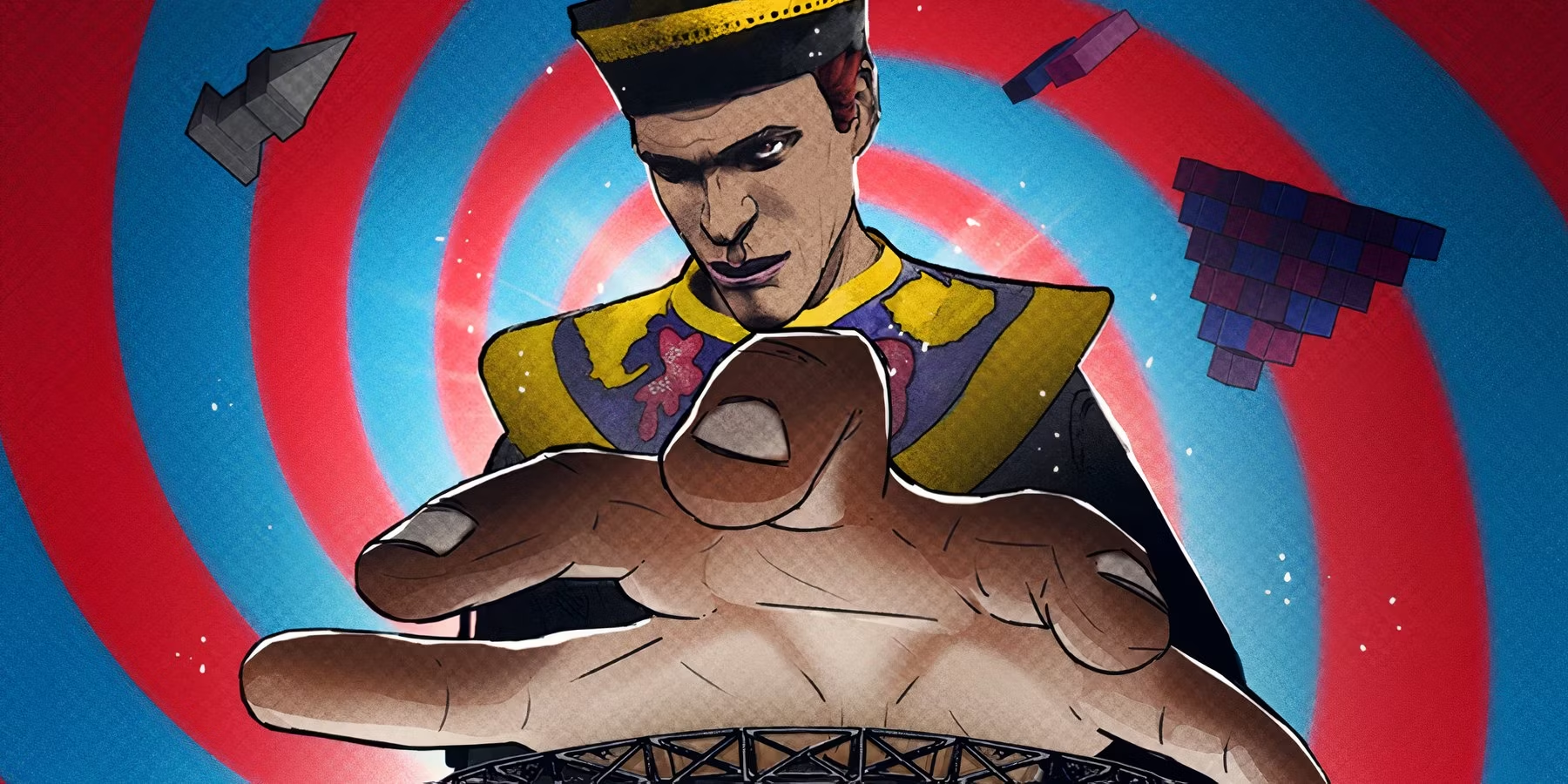
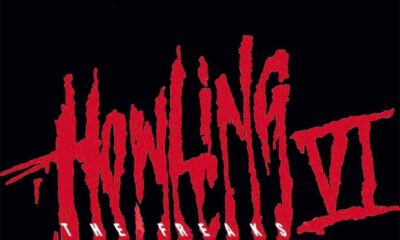

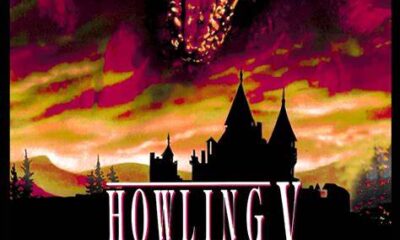

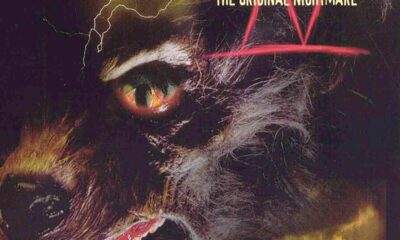

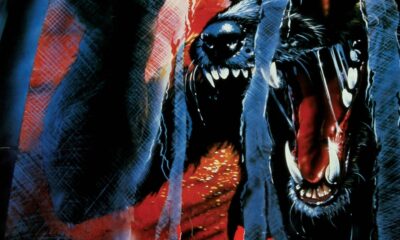

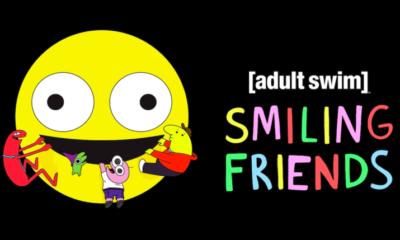



Nicole C. Luttrell
August 17, 2022 at 3:27 pm
Oh my goodness, I freaking love these books!
Jennifer Weigel
August 21, 2022 at 4:16 am
Yeah it had been a long time since I read them but they were really influential on my child self. 🙂
Did you happen to read the ones I missed? If so, please offer some thoughts. How do they compare?